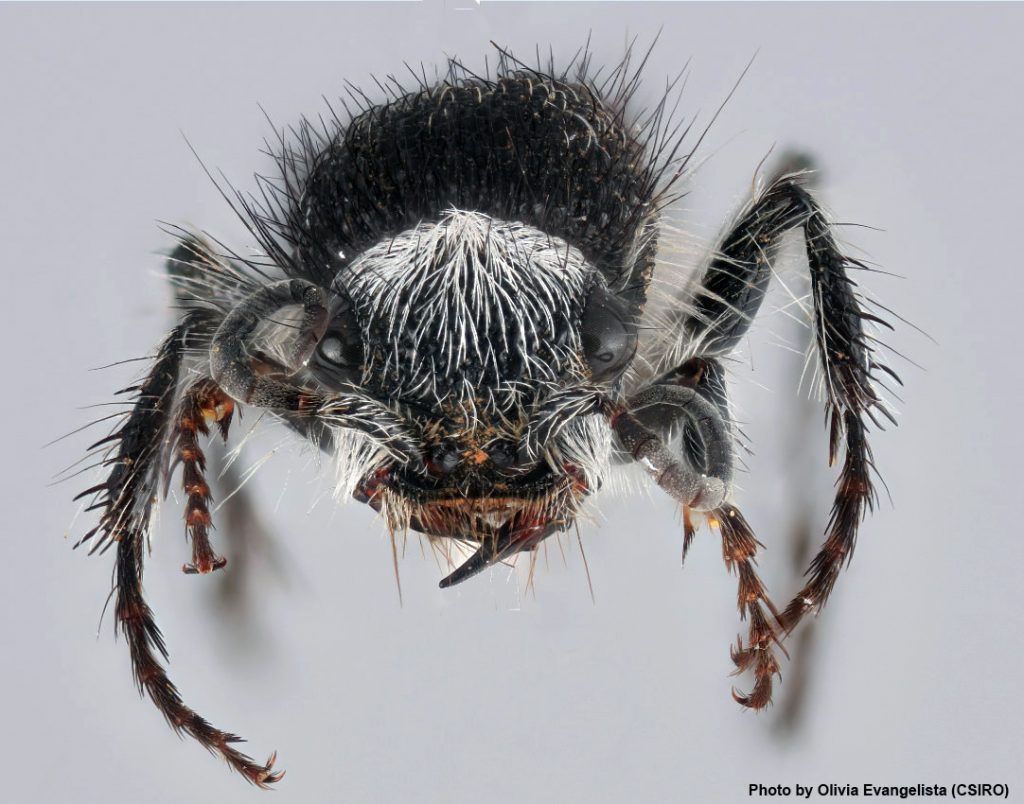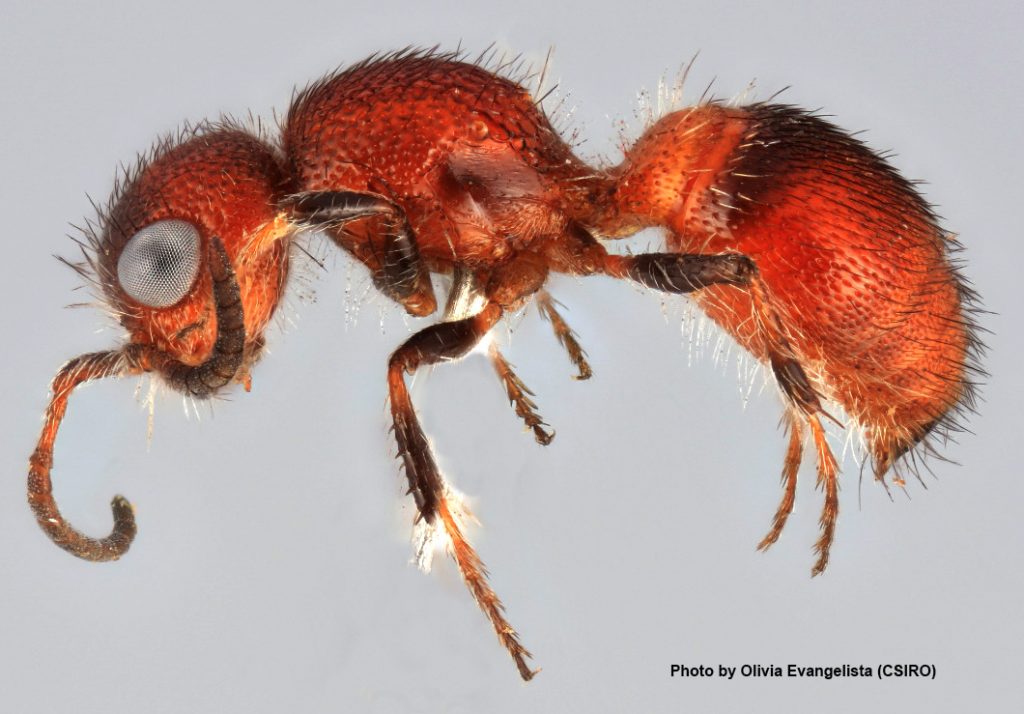A curious kind of wasp
Velvet ants (Mutillidae) are wasps that parasitise bees, carefully invading their nests and targeting their larvae by laying their eggs on or in this unsuspecting fresh food source. Unlike other parasitoid stinging wasps, velvet ants do not use their sting to paralyse their prey, but to protect themselves against predators or fight their way into bee nests.
Female velvet ants are wingless and covered with often brightly-coloured hairs, giving them the appearance of velvety-soft ants. This belies their sting, which is one of the most painful in the world.
Mimicry in velvet ants

Many velvet ant species are müllerian mimics. This is a type of mimicry where species evolve matching colours and patterns to warn predators that they share a harmful or unpalatable defence. It differs from Batesian mimicry, where a harmless species mimics a harmful one, such as a hover fly evolving the striped pattern of a bee.
Around the world, velvet ants are known to form müllerian mimicry rings (groups of unrelated species that look similar and occupy the same area) with other species of velvet ants and wasps.

“We are investigating the spatial patterns that result from the evolution of müllerian mimicry in velvet ants,” says Dr Juanita Rodriguez, a hymenopterist at the Australian National Insect Collection.
“Due to their very painful sting, velvet ants are ideal for studying the evolution of müllerian mimicry,” she says. “This strong, painful signal accompanied by a warning colouration teaches predators to keep away. Having a certain colour pattern provides an evolutionary advantage to velvet ants, keeping them safer from predators.”
Some very interesting discoveries have been made by studying mimicry. For example, humans may be driving mimicry patterns in weeds that have evolved to look like crops and survive weeding. Other recent studies show that climate change may be driving mimicry patterns in some insects.
Calling citizen scientists to help expand our knowledge of mimicry in velvet ants
The Australian National Insect Collection has developed an online game for citizen scientists to play. In this mimicry game, players take on the role of a predator, such as an insectivorous bird.
As a predator, what would factor in when deciding whether or not to feed on an insect? The game should take less than 15 minutes to play.
How to play
- Go to http://www.comparevelvetants.com/
- Look at the images and rate – on a scale from 0 to 10 – the similarity of one insect (on the left) to a group of insects (on the right).
- Click Next, to move to the next set of images.
- Images will continue to appear as long as you keep rating so feel free to stop at any time.
- To stop, close your browser window.
This study builds on previous work by CSIRO’s digitisation team and citizen scientists to image more than 5000 velvet ant specimens in the Australian National Insect Collection and transcribe the label data for each specimen using DigiVol.
The results
“Our study will help expand our breadth of knowledge on the occurrence of mimicry complexes in nature and will provide insights on the evolution of mimicry in these charismatic insects,” Juanita says.
When the study is over, the results will also be published in scientific papers, public reports, conference presentations and online.
If you’re not already an expert entomologist and can spare 15 minutes, play the mimicry game! http://www.comparevelvetants.com/